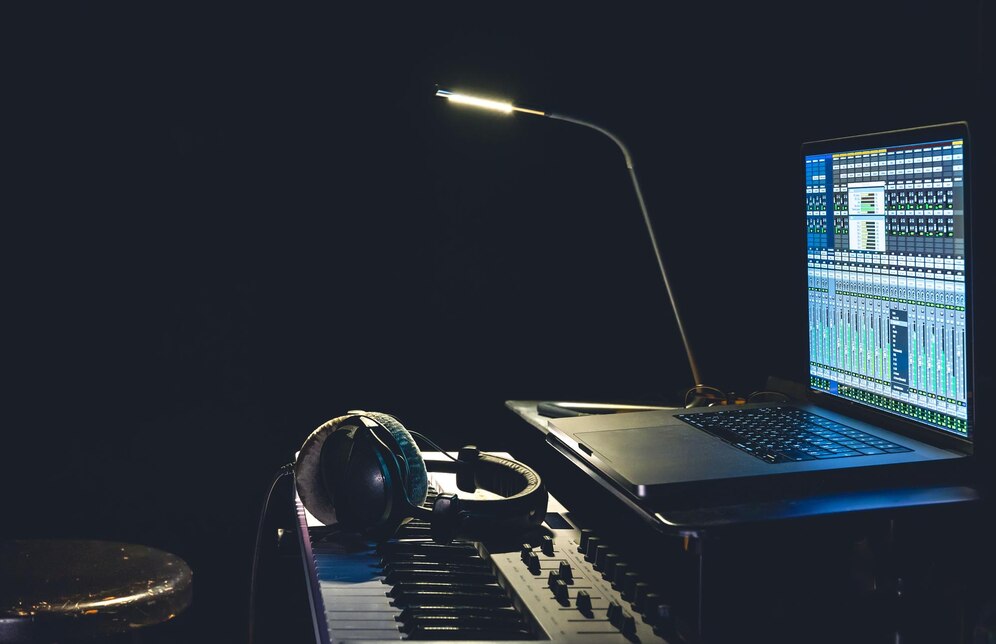Mastering EQ Tips and Tricks is crucial to producing high-quality sound. We’re here to guide you through the perplexity and business of audio equalization.
What is EQ and Why Does it Matter in Music Production?
Equalization, or EQ, is a concept in music production that involves balancing the frequency spectrum of some EQ in music. It is similar to using the tone controls on a stereo system—too much of one frequency can make the sound like an unpleasant experience, while a balanced mix can create a pleasing listen.
The Role of EQ in Sound Equalization: From Frequency Control to Audio Balance
Proper EQ Frequency Control and mastering audio balance often separate amateur from professional recordings. It shapes the tonal quality of a track and can contribute to a well-rounded, complete sound. The role of EQ in sound equalization is far-reaching and varied.
Mastering EQ Workflow Efficiency Through Pro EQ Strategies
Mastering EQ Workflow and Pro EQ Strategies is all about the subtleties. Depending on the frequency range, you might use a low pass filter to eliminate unwanted low end from a vocal track or a high pass filter to clean up the high end of a bass guitar.
EQ Settings and Mixing EQ Tricks: Optimizing Your EQ Curve
Navigating EQ settings is crucial in any equalization process. But there are certain mixing EQ tricks to optimize your EQ curve, such as using a low pass filter to rid the sound of unwanted low-end frequencies.
Advanced Equalization Methods That Professionals Use
Advanced Equalization Methods encompass a wide range of techniques depending on the specific requirements of the audio track. One example is Dynamic Range EQ, a method whereby certain frequency ranges are targeted for gain reduction during specific instances.
Dynamic Range EQ and EQ Filter Applications
Dynamic Range EQ involves utilizing the full frequency range from low bass (30Hz) to high frequencies (20KHz). On the other hand, EQ Filter Applications involve using a high pass filter to eliminate unwanted high frequencies or a low pass filter to eliminate unwanted low frequencies.
Precision EQ Adjustments: EQ Best Practices with EQ Plugin Recommendations
Precision EQ Adjustments involve using EQ Best Practices and can make or break your mix. Various EQ plugins can enhance your EQ workflow efficiency, but some of the most recommended include FabFilter’s Pro-Q and Waves’ Parametric EQ.
Parametric EQ Mastery: Mastering Audio Balance in the Studio
Mastering audio balance in the studio requires Parametric EQ Mastery. A parametric EQ allows for precise control over the EQ spectrum management and optimal EQ settings, whether working with low-shelf or high-shelf frequencies.
Mastering EQ for Beginners: Essential EQ Techniques and Tips
Mastering EQ for Beginners requires learning Essential EQ Techniques and Tips. Starting with understanding the frequency spectrum, beginners should familiarize themselves with low-pass and high-pass filters and how these can affect the sound of their music.
EQ in Music Production: EQ Spectrum Management and EQ Plugin Mastery
The use of EQ in Music Production is paramount. It involves mastering EQ spectrum management and the use of EQ plugins effectively. This involves understanding the frequency ranges and knowing how to use each feature of an EQ plugin to enhance the sound quality.
Graphic EQ Tips: Understanding EQ Frequency Control
Graphic EQ Tips can help beginners and seasoned experts understand EQ Frequency Control. Knowledge of controlling frequency range using a low or high pass filter, adjusting gain reduction, or utilizing advanced equalization methods—these are all important for mastering EQ frequency control.

EQ Curve Optimization: EQ Fine-Tuning Secrets and Studio Equalization Tips
EQ Curve Optimization involves EQ Fine-Tuning Secrets and Studio Equalization Tips. Correctly setting your EQ curve is critical for achieving the optimal mix, and several techniques can help, such as adjusting the ‘Q’ value on a parametric equalizer or using a high pass filter on the low-end frequencies.
Mastering EQ Tips: Advanced EQ Techniques and Tricks
Mastering EQ involves meticulous application of Advanced EQ Techniques and Tricks. This can include making precision EQ adjustments to optimize the sound, mastering parametric EQ, and using EQ plugin recommendations to facilitate the process.
EQ Workflow Efficiency: Sound Equalization Tips for Beginners
Boosting EQ workflow efficiency is important not just for professionals but also for beginners. Simple sound equalization tips and tricks, such as using a high pass filter to remove unwanted low frequencies, can greatly enhance the sound of a mix, even when you’re just starting.
Mastering EQ is not just about understanding these tools and techniques; it’s about training your ears to hear what’s missing or overemphasized in a mix and then taking the right steps to correct it. The result will be a more balanced, pleasing sound that stands up to professional scrutiny and provides the listener with the most fulfilling sonic experience.


Leave a Reply